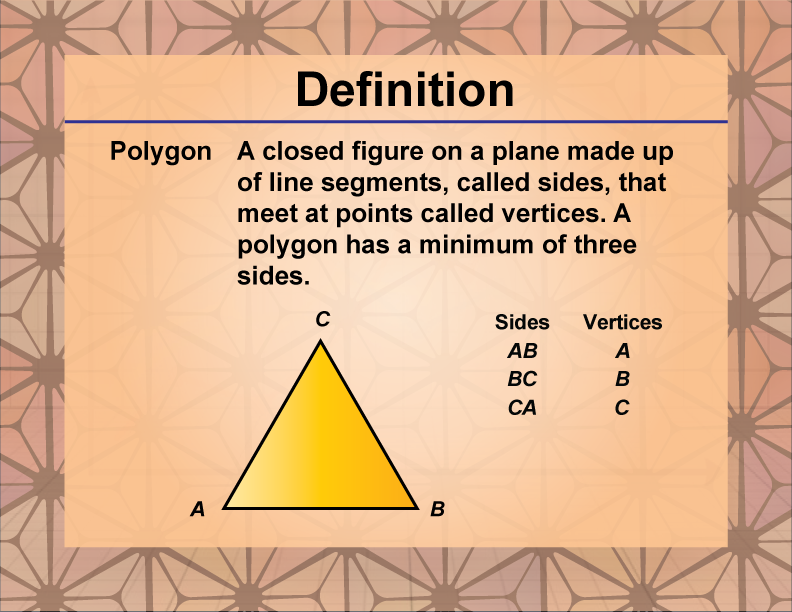
Display Title
Definition--Polygon Concepts--Polygon
Display Title
Polygon

Definition
A polygon is a closed figure on a plane with straight sides and vertices. Examples of polygons include triangles, quadrilaterals, pentagons, and hexagons.
Description
In geometry, polygons are fundamental shapes that form the basis for more complex structures and concepts. They are defined as closed plane figures with straight sides. Each side intersects exactly two other sides at its endpoints, creating vertices. Polygons are classified based on the number of sides they have: triangles (3 sides), quadrilaterals (4 sides), pentagons (5 sides), and so on.
Understanding polygons is crucial in geometry because they help in studying properties such as angles, symmetry, and tessellation. For instance, the sum of the interior angles of a polygon can be determined using the formula (n-2) × 180°, where n is the number of sides. Regular polygons, which have all sides and angles equal, are particularly important in various fields, including architecture and art, due to their aesthetic symmetry.
Polygons also serve as the building blocks for more advanced geometric concepts and are integral in the study of Euclidean geometry. Their properties and classifications lay the groundwork for exploring more complex shapes and figures.
For a comprehensive collection of terms related to polygons, visit Media4Math's Polygons Collection.
| Common Core Standards | CCSS.MATH.CONTENT.5.G.B.3, CCSS.MATH.CONTENT.5.G.B.4, CCSS.MATH.CONTENT.3.G.A.1, CCSS.MATH.CONTENT.3.MD.D.8, CCSS.MATH.CONTENT.6.G.A.1, CCSS.MATH.CONTENT.6.G.A.3, CCSS.MATH.CONTENT.HSG.CO.A.3 |
|---|---|
| Grade Range | 3 - 8 |
| Curriculum Nodes |
Geometry • Polygons • Definition of a Polygon |
| Copyright Year | 2013 |
| Keywords | polygon, definitions, glossary term |